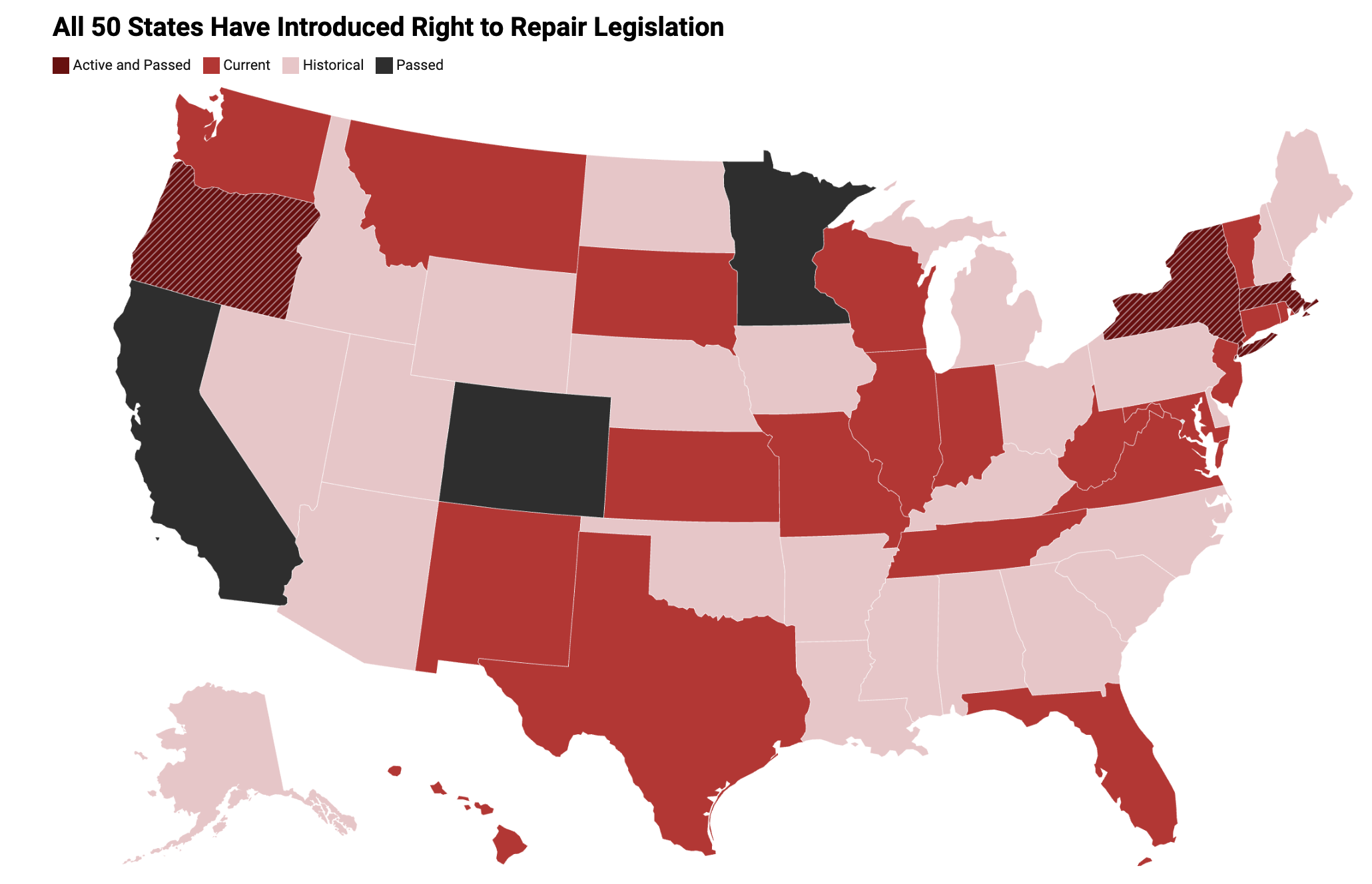Right to repair legislation has now been introduced in all 50 states, a milestone that, despite not all passing, shows the power of the grassroots political movement. Thursday, Wisconsin became the final state in the country to introduce a right to repair bill.
So far, right to repair laws have been passed in Massachusetts, New York, Minnesota, Colorado, California, and Oregon. Another 20 states are formally considering right to repair bills during this current legislative session. The rest have previously introduced bills that have not passed; so far we have seen that many states take several years to move a given right to repair bill through the legislative process.

Right to repair laws are designed to make it easier for consumers to fix their electronics, farmers to fix their agricultural equipment, for hospitals to fix their medical devices, and so on. Most right to repair legislation requires companies to sell repair parts to the general public, to make repair manuals available, and bans the use of technological protection measures (which are called “software locks”) that are designed to restrict repair only to authorized repair technicians.
I have been following the right to repair movement for a decade, and, in the early days, a small group of consumer rights advocates worked in a couple states to get legislation introduced.
Many of those bills were killed quickly by big tech lobbyists, who were successful at scaring lawmakers into believing that right to repair would make devices less safe or would be a boon for hackers. Over time, those same consumer rights advocates have been successful in convincing the general public that you should be able to fix the things you buy. The movement was endorsed by the Biden White House and Biden’s Federal Trade Commission, millions of consumers, and an increasing number of state legislators. The movement has gotten companies like Apple, Google, and John Deere to change their policies, inching toward a world where repair is more easily accessible.
"Now that Wisconsin filed their first Right to Repair legislation, we’ve completed the sweep of getting bills filed in all 50 states. Our legislative map no longer has any blanks,” said Gay Gordon-Byrne, Executive Director at Repair.org, which has been advocating for the legislation. “This proves that Right to Repair is needed everywhere—and we are well on our way towards making that happen."
“Americans are fed up with all the ways in which manufacturers of everything from toasters to tractors frustrate or block repairs, and lawmakers are hearing that frustration and taking action,” said Nathan Proctor, right to repair director for consumer rights group PIRG.
iFixit’s Kyle Wiens, meanwhile, said covering the entire map is a “tipping point” for the movement: “We’ve gone from a handful of passionate advocates to a nationwide call for repair autonomy. People are fed up with disposable products and locked-down devices. Repair is the future, and this moment proves it.”


